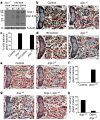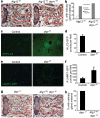Activation of autophagy during cell death requires the engulfment receptor Draper
- PMID: 20577216
- PMCID: PMC2892814
- DOI: 10.1038/nature09127
Activation of autophagy during cell death requires the engulfment receptor Draper
Abstract
Autophagy degrades cytoplasmic components that are required for cell survival in response to starvation. Autophagy has also been associated with cell death, but it is unclear how this is distinguished from autophagy during cell survival. Drosophila salivary glands undergo programmed cell death that requires autophagy genes, and engulfment of salivary gland cells by phagocytes does not appear to occur. Here we show that Draper (Drpr), the Drosophila melanogaster orthologue of the Caenorhabditis elegans engulfment receptor CED-1, is required for autophagy during cell death. Null mutations in, and salivary gland-specific knockdown of, drpr inhibit salivary gland degradation. Knockdown of drpr prevents the induction of autophagy in dying salivary glands, and expression of the Atg1 autophagy regulator in drpr mutants suppresses the failure in degradation of salivary glands. Surprisingly, drpr is required in the same dying salivary gland cells in which it regulates autophagy induction, but drpr knockdown does not prevent starvation-induced autophagy in the fat body, which is associated with survival. In addition, components of the conserved engulfment pathway are required for clearance of dying salivary glands. To our knowledge, this is the first example of an engulfment factor that is required for self-clearance of cells. Further, Drpr is the first factor that distinguishes autophagy that is associated with cell death from autophagy associated with cell survival.
Figures




Similar articles
-
The engulfment receptor Draper is required for autophagy during cell death.Autophagy. 2010 Nov;6(8):1192-3. doi: 10.4161/auto.6.8.13474. Epub 2010 Nov 16. Autophagy. 2010. PMID: 20864812 Free PMC article.
-
The NF-κB Factor Relish Regulates Atg1 Expression and Controls Autophagy.Cell Rep. 2018 Nov 20;25(8):2110-2120.e3. doi: 10.1016/j.celrep.2018.10.076. Cell Rep. 2018. PMID: 30463009 Free PMC article.
-
Warts is required for PI3K-regulated growth arrest, autophagy, and autophagic cell death in Drosophila.Curr Biol. 2008 Oct 14;18(19):1466-75. doi: 10.1016/j.cub.2008.08.052. Epub 2008 Sep 25. Curr Biol. 2008. PMID: 18818081 Free PMC article.
-
Distinct death mechanisms in Drosophila development.Curr Opin Cell Biol. 2010 Dec;22(6):889-95. doi: 10.1016/j.ceb.2010.08.022. Epub 2010 Sep 16. Curr Opin Cell Biol. 2010. PMID: 20846841 Free PMC article. Review.
-
Autophagy in Cell Life and Cell Death.Curr Top Dev Biol. 2015;114:67-91. doi: 10.1016/bs.ctdb.2015.07.012. Epub 2015 Sep 9. Curr Top Dev Biol. 2015. PMID: 26431564 Review.
Cited by
-
Uba1 functions in Atg7- and Atg3-independent autophagy.Nat Cell Biol. 2013 Sep;15(9):1067-78. doi: 10.1038/ncb2804. Epub 2013 Jul 21. Nat Cell Biol. 2013. PMID: 23873149 Free PMC article.
-
Accurate elimination of superfluous attachment cells is critical for the construction of functional multicellular proprioceptors in Drosophila.Cell Death Differ. 2019 Oct;26(10):1895-1904. doi: 10.1038/s41418-018-0260-y. Epub 2019 Jan 8. Cell Death Differ. 2019. PMID: 30622305 Free PMC article.
-
Ecdysone controlled cell and tissue deletion.Cell Death Differ. 2020 Jan;27(1):1-14. doi: 10.1038/s41418-019-0456-9. Epub 2019 Nov 19. Cell Death Differ. 2020. PMID: 31745213 Free PMC article. Review.
-
Glia-Neurons Cross-Talk Regulated Through Autophagy.Front Physiol. 2022 Apr 29;13:886273. doi: 10.3389/fphys.2022.886273. eCollection 2022. Front Physiol. 2022. PMID: 35574462 Free PMC article.
-
MANF silencing, immunity induction or autophagy trigger an unusual cell type in metamorphosing Drosophila brain.Cell Mol Life Sci. 2015 May;72(10):1989-2004. doi: 10.1007/s00018-014-1789-7. Epub 2014 Dec 16. Cell Mol Life Sci. 2015. PMID: 25511196 Free PMC article.
References
-
- Pandey UB, et al. HDAC6 rescues neurodegeneration and provides an essential link between autophagy and the UPS. Nature. 2007;447:859. - PubMed
-
- Hay BA, Wolff T, Rubin GM. Expression of baculovirus P35 prevents cell death in Drosophila. Development. 1994;120:2121. - PubMed
-
- Rusten TE, et al. Programmed autophagy in the Drosophila fat body is induced by ecdysone through regulation of the PI3K pathway. Dev. Cell. 2004;7:179. - PubMed
Publication types
MeSH terms
Substances
Grants and funding
LinkOut - more resources
Full Text Sources
Other Literature Sources
Molecular Biology Databases

